
Adventure Motorcycling:
A definition and guide.
March 2020
Author/photographer: Seamus Willox
So you're curious about this adventure bike craze? Or you're thinking about getting into Adventure riding? No idea where to start? Look no further! We're here to help you see what it's all about, and get a head start on the most popular genre of motorcycling.
First off, what is adventure riding? Adventure riding can be lots of different....adventure riding IS a lot of different things. It's street riding, dirt riding, touring, carving corners, and exploring. Adventure riding can be as easy or as hard as you want to make it. Adventure motorcycle riders will see things most won't, go places most won't, learning new techniques along the way. Adventure bikes are the jack of all trades, they do just about anything you can do on a bike, and do it well. There's a reason why the adventure bike segment of this industry is the fastest growing.
A quick definition or two before we start:
Adventure: The dictionary defines this as: to engage in hazardous and exciting activity, especially the exploration of unknown territory. I believe all GOOD stories come from good adventures, and a good adventure never came from a well played out plan.
Farkle: Fancy Accessory Really Kool Likely Expensive. The word is rumored to originate with the ST1100 crowd, and is common among Adventure touring and sport touring riders. We'll make sure you get your new bike all farkled up!
Contact points : (when regarding armor) A contact point is a common place when your body can contact the ground in the event of a crash or fall. Major joints, palms of your hands, elbows, knees, hips, shoulders, ankles, knuckles, etc.
Off-Road:By Off-Road I mean trails, power lines, cut lines, single track, or goat trails, somewhere a car won't go.
1: Casual Adventure Cruiser

The Casual Adventure cruiser will mostly stick to street riding, but would like to be able to venture down gravel roads, and maybe the trunk road once in a while. They may have riding buddies that stay to the pavement that they'd like to ride with, and still be comfortable on the pavement for day trips. The sense of the adventure is there, but responsible decisions are present too. This rider is a street rider that appreciates the option to go farther.
80-85% Paved roads
15-20% gravel roads
0-5% off road (usually from the gravel to the fishing/camping/lunch spot)
Our top 5 bike picks for the casual rider.
Recommended Farkles:
- Tank bag (for water, snacks, camera, tire gauge etc.)
- Rear Top case (place to put helmet, extra gear, lunch etc.)
- Basic hand-guards (keep the hands warmer, to protect against rocks etc.)
- 60/40 On/Off tire (something still great on the road, but capable on the gravel)
- Shinko 705, Heidenau K60, Mitas E07, TKC70, or sometimes stock.
2: Long Distance Tourer

The long distance Adventure tourer will be planning a long trip, over 3 weeks on the bike, mostly highway, but wants to venture off pavement at certain spots to get to some nice out of the way places for a great viewpoint, or to see some things most won't. They'll spend most time on the roads between stops. This may be a one off trip of a lifetime, or an annual expedition. Quite often travels with other classes of bikes like Goldwings, large cruisers, sport touring bikes, or other road leaning Adventure bikes.
85-90% Paved roads (lots of two lane highways)
10-15% Well travelled gravel roads
0-5% off-road (usually from the gravel to the fishing/camping/lunch spot)
Our top 5 bike picks for the long distance:
- Suzuki V-Strom (usually 1000 or the new V-Strom 1050 for highway)
- Honda Africa Twin Adventure Sport
- Honda Africa Twin
- KTM 1290 S (experienced riders only, this bike is a beast :) )
- KTM 1290 R (see above)
Recommended Farkles:
- Side bags and top case (typically hard aluminum to keep things dry, also doubles as a seat and table)
- Tall windshield (less fatigue with less wind)
- Heated grips + Hand-guards (you may find yourself riding at night, warm hands are well worth it)
- Tank Bag (for your daily stuff, easy to reach while still (stopped) on the bike)
- Engine guards (to hold the extra lights)
- Extra LED lights (extra light is always welcome on a lonely road)
- 12v/USB socket (to charge Phone, GPS, boost battery, etc.)
- 60/40 On/Off tire (Mitas E07 and K60 Scouts put up a lot of miles, and are confident on the gravel)
- Tool kit (better to have it and not need it than need it and not have it)
- GPS and mount. (it'll come in handy, you know it will!)
3: Hometown Adventure Rider

This rider usually sticks closer to home due to work or family, does mostly day trips, maybe the occasional over night-er somewhere. Frequently ventures down gravel roads, likes to see where all the dead ends lead. Will take it off-road if they think there's something to see, maybe a fishing spot or a good place to get a few pictures.
60-70% Pavement
30-40% Gravel (mostly back roads and the occasional fire road)
5-15% Off-Road (short sections, down to the river, or a short cut somewhere)
Our top 5 bike picks:
- KTM 790S or R
- Honda Africa Twin
- Suzuki V-Strom (Tire choice is key to where you want to go)
- CB500X (tire choice again, 2019 and newer has 19" front wheel)
- KTM 1290 (be carefull with this one)
Recommended Farkles:
- 50/50 tire (something decent on the gravel, and decent on the street)
- Shinko 804/805, Continental TKC 80, Motoz Tractionator Adventure, Mitas E07+ or E10, Michelin Anakee Wild, Metzeler – Karoo 3, there's a huge selection in this segment)
- Crash bar (for protection and lights)
- Extra LED lights (because you never know)
- Tank bag (snacks, camera, lures, etc.)
- Skid plate (there's rocks by the river, skid plates are cheaper than engine cases)
- 12v/USB socket (charging phone, camera, GPS etc.)
- Hand guards (keep off the rocks, and warmer on the way back)
4: The Explorer

This is the reason for the adventure bikes. The Explorer is going to make great use of the true adventure bike. They'll take their adventure bike almost anywhere. A lot of time will be spent on fire roads, trunk roads, and anywhere people usually aren't. They'll sometimes be long trippers, sometimes just day trips, either way, they're going on an adventure! Their bike will probably have a few scratches on it, and they 'll treat them as battle scars. Off-road is no stranger, but that's not always the goal. Fishing trips to out of the way places, "I wonder where that goes" ATV trails, some hills, but not TOO much crazy stuff. Usually only on pavement to get to the gravel, or if riding with full street bikes.
30-40% Pavement
60-70% Gravel
10-20% Off-Road (cleaner ATV trails, power lines, the easier stuff)
Our top 5 bike picks for the Explorer:
- Honda Africa Twin
- Honda Africa Twin Adventure Sport
- KTM 790R
- KTM 1290R
- Suzuki V-Strom (be careful off-road, take it easy in the harder stuff)
Recommended Farkles:
- 50/50 on/off tires
- Shinko 804/805, Continental TKC 80, Motoz Tractionator Adventure, Mitas E07+ or E10, Michelin Anakee Wild, Metzeler – Karoo 3, there's a huge selection in this segment)
- Skid plate (because "I wonder where that goes")
- Crash bars (lights and See above)
- Extra LED lights (for coming back after "I wonder where that goes")
- Aluminum wrap around hand guards (riding back without a front brake or clutch lever isn't fun)
- 12v compressor + tire repair kit (either plugs for tubeless, or patches for tubes and the knowledge how to use them)
- Extra tools (factory tool kits aren't typically great)
- GPS and mount (to find your way there and back, also lets you track your days for later reference/proof)
- Tank bag (snacks, Gatorade, camera)
- SOFT bags for longer trips (off-road soft bags are much safer for your legs than hard bags)
5: Adventure Goon

Adventure is sometimes described and taking inappropriate equipment to out of the way places; or a good adventure never comes from a well executed plan, if there's even a plan. This rider will put full knobby tires on and use them 100%! They'll use their bike to take them to places bikes don't really belong. You say “You can't take that bike there”, and they hear a challenge. They'll only be on the pavement to get to the next adventure, or if they're riding with street bikes (they'll constantly be looking for an escape route to gravel or off-road). Gravel roads are just a means of getting to "the good stuff", which will be power lines (nice smooth and fast), ATV trails (I guess there's a little challenge getting around the ruts), and even Dirt bike trails (because why not). They may find themselves in places that'll be hard to get out, or over, or through, but that's part of the adventure. Their bike WILL have battle scars, broken pieces, and dents, this doesn't bother them "I bought this bike to use it, not baby it!"
10-20% Pavement (because I don't live where the good stuff is)
60-80% Gravel roads (fire roads, trunk roads, and back roads are fun at speed)
20-40% Off-Road (not always the crazy stuff, but it often goes that way)
Our top 5 bike picks for the Goon:
- KTM 790R
- KTM 1290R
- Honda Africa Twin
- Honda Africa Twin Adventure Sport
- KTM 790S (make sure you have a heavy skid plate)
Recommended Farkles:
- All the armor, all of it.
- Skid plate, heavy, you're going to use it.
- Crash bars, upper bars if available also.
- Engine case covers (a sharp rock can punch through pretty easy, dropping all your oil)
- Full wrap around aluminum hand-guards (levers are nice to have, and saves your knuckles)
- Headlight cover/guard (if you're riding with other like minded crazy people, it'll protect against rocks thrown up by your buddy)
- Brake Reservoir guard (the rear resevoir is often exposed up behind the right peg, brakes do come in handy sometimes)
- Knobby tires 80/20 or better (Mitas E09 rear/C21 front, or anything close to dirt bike that fits with the WEIGHT, and DOT)
- Extra LED lights (things happen, late night rides back home also happen, being able to see is kinda nice too)
- SHORT windshield (there's a chance you'll go over the bars at some time, eating a tall touring windshield on the way is not recommended)
- GPS + Sturdy mount (you'll want this tucked away in case of a crash, "that looks like a cool trail" sometimes turns you around in the woods)
- Folding mirrors (when the bike goes down, you get to keep your mirrors)
- Wider grippier, stronger pegs (you'll spend a lot of time standing up in the muck)
- 12v/USB socket (for charging things)
- Extra tools, including wire and duct tape, oh and some coins and JB weld, don't ask just bring it.
- Tire repair kit including 12v compressor (plugs for tubeless, patches for tubes and know how to use them)
- Consider suspension upgrades, depending on bike. (suspension is always the best upgrade! Better suspension will keep you on track, buck less, track better, bottom out less, let you go faster and safer. AT LEAST tune your stock suspension for you and your riding!)
The Gear:
Now for the gear you should be wearing. Now I'm not going to go into full depth with the gear, just going to give you and outline of what to expect. Gear is a very personal choice, helmets fit people different, jackets feel different for different people, and it can all depend on how you plan on riding. So, this is a guideline. You should get a good idea of what to look for out of this though.
Helmets:
There are a plethora of quality helmets to choose from, so we'll try and narrow that down for you. For Adventure riding, there are 3 types we'll recommend, depending on what type of riding you'll be doing. The first and most common type is...before we get to the helmets themselves, a quick note on safety standards.
Helmet safety standards:
As you may or may not know, there are a few different safety standards for helmets. I will give you a BASIC rundown of the main three, what they are, and how they compare. Keep in mind, these safety standards won't work if the helmet you're wearing doesn't fit properly, always remember to get your helmet fitted properly.
D.O.T. (official Document here)
This standard (FMVSS 218) by the US Department of transportation is what Canadian laws require helmets to adhere to. (note: the sticker MUST stay on the helmet)
E.C.E. (official Document here)
(Economic Commission for Europe)
E.C.E. is not required by Canadian law for street riding, but the certification is more stringent in some ways.
Snell (official Document here)
The Snell foundation is an independent US based foundation that has been around since 1957. Snell M2020 standards are the most up to date, and complies with both D.O.T. AND E.C.E. standards. Snell M2015 is the previous standard from this foundation
OK, now to the three main styles recommended for adventure riding.
Full face Helmets:
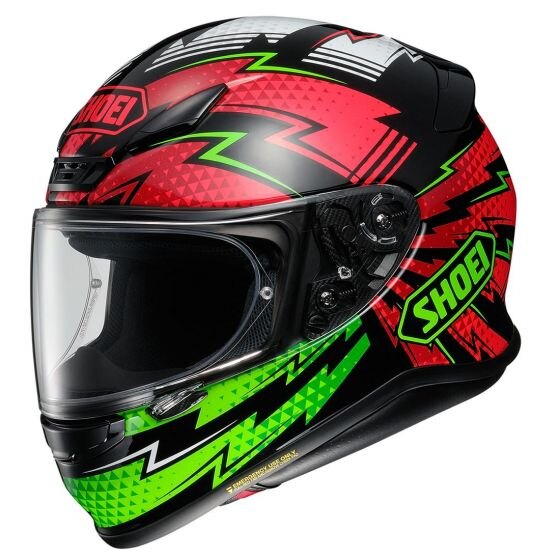
Full face helmets are by far the most common type of street bike helmet out there, they offer the most protection, a ton of features, and lots of styles to choose from. When looking at full face helmets, getting a budget sorted early will be a good idea as a decent lid can range from a $200 all the way up to a $1000 (or more). (hint: you don't need to spend $1000 to get a good helmet) Typically, the more you spend on a helmet the better the materials will be, the more features you can get, the better venting, higher quality visors, lower weight, and cooler styles.
Adventure Helmets:
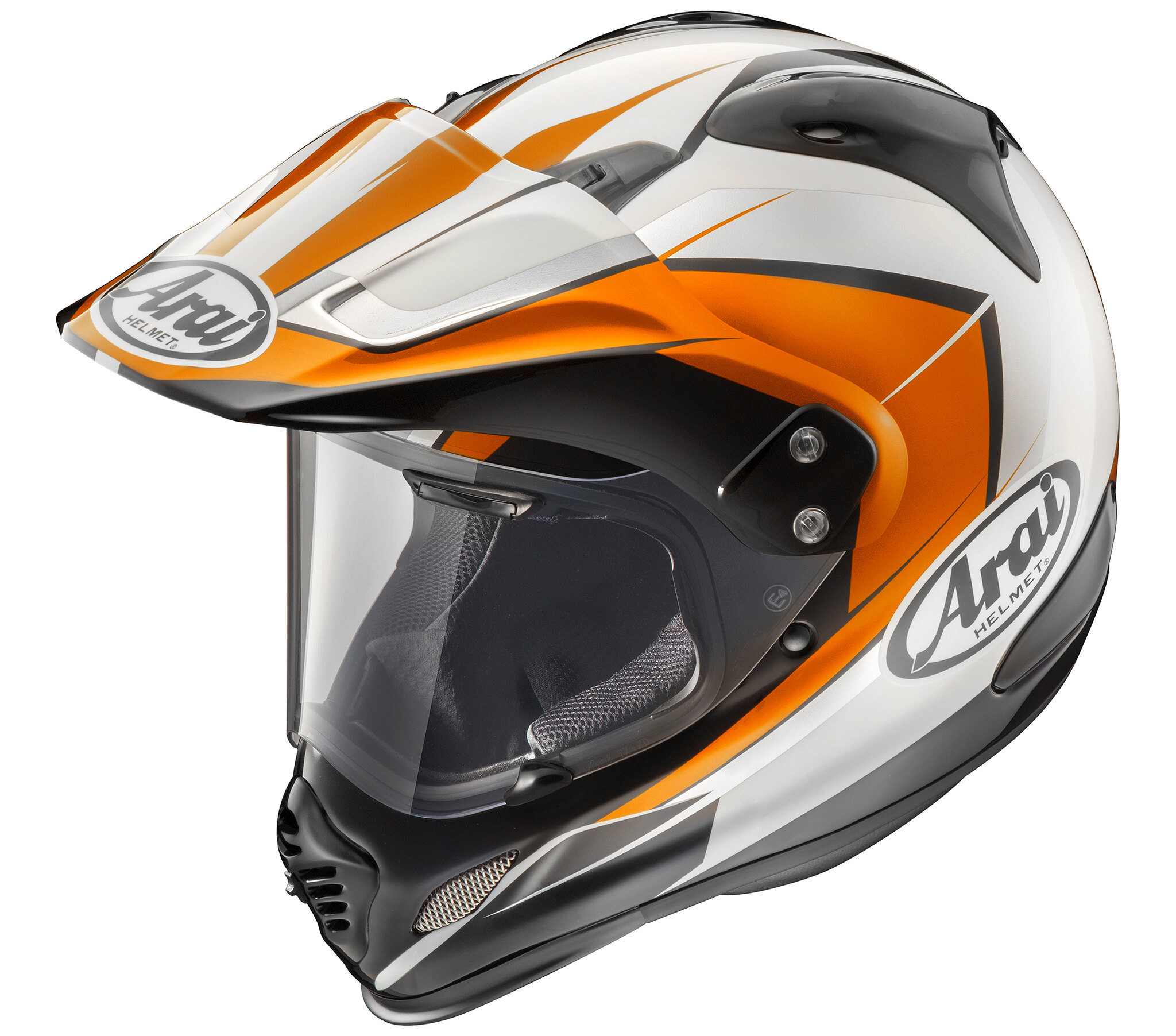
Adventure helmets are much like the full face, but with an added peak at the top like a motocross helmet. This peak is nice to block the sun especially going down a tree lined road where you're in and out of the shadows consistently. These peaks are designed to let the wind go through them when at high speeds, unlike your typical off-road helmet, so they won't be pulling back much because of the wind. For most adventure helmets, they also have the option to remove the peak if you're doing a lot of highway riding.
Modular Helmets:
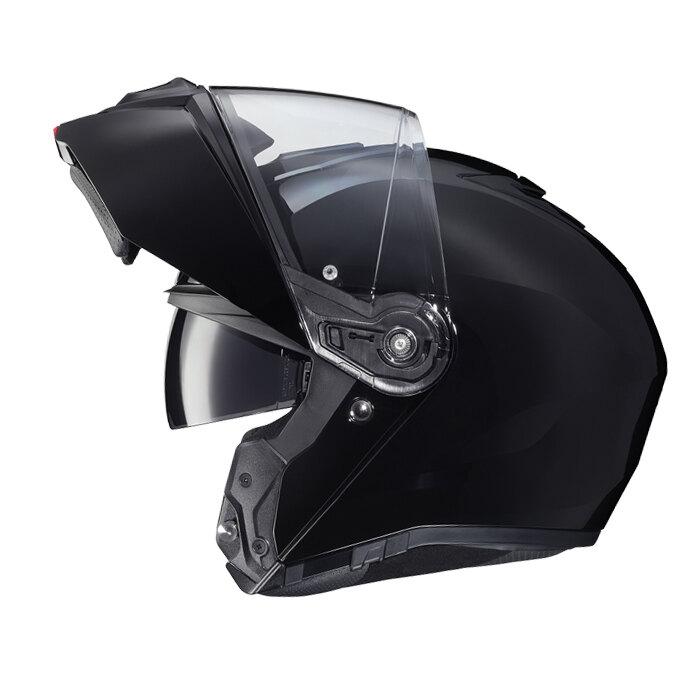
Modular helmets look just like full face, and in some cases, the adventure helmets, but with one major feature; the chin flips right up along with the visor exposing your beautiful face (it's a little know fact that these helmets in this position are not flattering, eh Richard? but don't worry about that). This feature allows you to flip it up, stopped or at low speeds, to talk with riding companions, have a drink of water, or just get some air. People with glasses tend to gravitate towards these helmets as they are easier to deal with eyeglasses. A note though, the modular part of the helmet is not part of the crash protection, this only protects from wind, small debris, sun, and bugs. Modular helmets tend to be a bit on the heavier side because of the mechanism for the flip up, and tend not to be as quiet as full face helmets due to the seam of the flip up. That being said, modular helmets are VERY popular, and they're very versatile. You won't find much under $200 for modular helmets (you may find a sale though) they start just above $200 MSRP.
With all the choices out there, the best thing is to come into the dealership and try on a whole bunch of them and see what FITS YOU BEST.
Note: Bright helmets catch more attention from cagers (Cager: Car drivers that are obviously jealous of you on your motorcycle, so they may be distracted googling the nearest motorcycle dealership)
Riding Jackets:
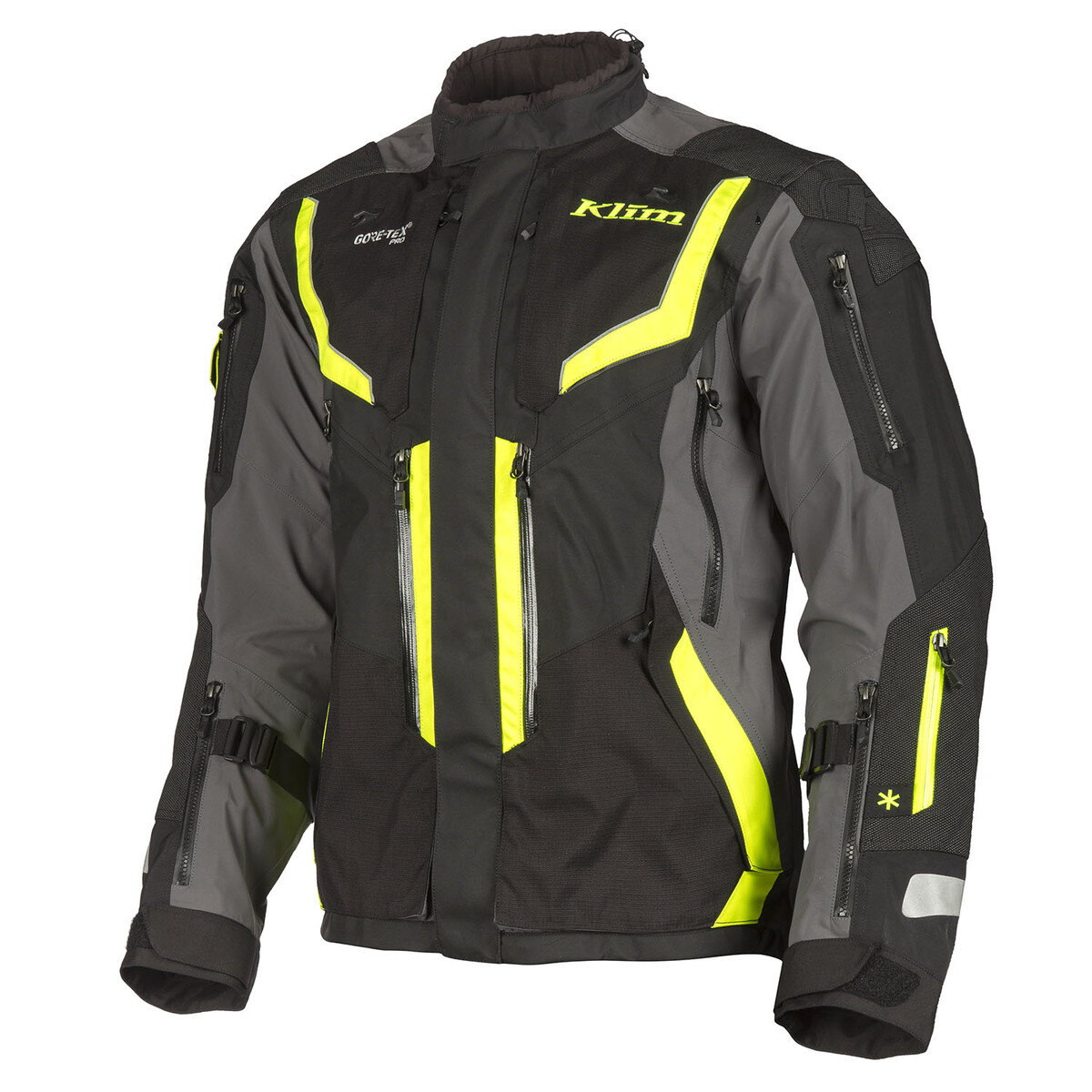
With all the high end brands out there choosing a jacket can be difficult. First off I'd recommend a Textile jacket over a leather one for this type of riding. A GOOD leather jacket can provide fantastic protection in a fall, but they tend to be heavy, stiff, and not very well vented. Leather works great on race bikes due to the speed, and touring cruisers because you're not really changing positions, and they finish the look ;) .
Textile jackets come in a HUGE verity of shapes, sizes, colors, and features. Look for Adventure or possible a touring jacket, they will be made for a rider in the upright position you'll be in, very relaxed and natural. Touring jackets tend to be a bit longer and have more pockets. Adventure jackets may have features like removable sleeves (not always a good thing), built in hydration pockets (a great way to carry water, but may pull the jacket back when full), vast amount of venting, extra liners, internal armor, and the higher end ones can be fully waterproof. A good jacket can start in the $300 range and at the top end $1300, but there's a lot to choose from in between.
Keep in mind of where and how you want to ride. For someone spending mostly short trips on the time on the pavement, you probably won't require a real high end jacket. You'll be at speed to keep you cool, you'll be home at the end of the day to dry off, you'll be near a stopping point for a drink, so you could get away without the hydration pack, excessive venting, gore-tex waterproofing, or the extra pockets and liners. If you're on long trips, those features could come in real handy and make your trip that much more comfortable. For the rider who spends some time off-road, the hydration pack will come in handy, the extra vents will be a godsend, waterproof will keep you more comfortable, and the armor can come in handy.
Which ever jacket you decide to go with make sure it fits properly, it should be snug with a hoodie or sweatshirt underneath, but not pull far out from your waist. The sweater is for an extra layer if it gets cold, and if it's too big the wind on the highway will balloon the jacket out.
As for colors, I highly recommend something bright, something that sticks out so people can see you easier. Remember, you're on a motorcycle.
Gloves:
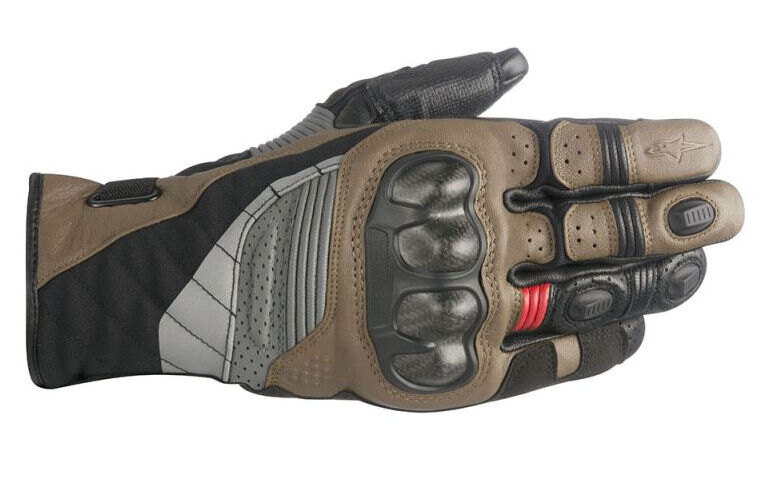
Again, there's lots of choices. Gloves though, I'd recommend two pairs, one shorter, lighter pair for most riding, and a set of warmer, possibly waterproof gauntlets. Look for something with hard knuckles and a re-enforced or padded base of your palm, these are a contact points if you go down. Gloves should fit tight but comfortable, like most riding gear. Leather isn't always a bad idea with the gloves, although the textile riding gloves are good too. Don't be afraid to spend a little money here, a cheap pair of $20 gloves are typically that, cheap. You don't need to spend $300 on a pair, you can, but don't need to. For you off-road riders, there are motocross gloves with hard knuckles too.
Boots:
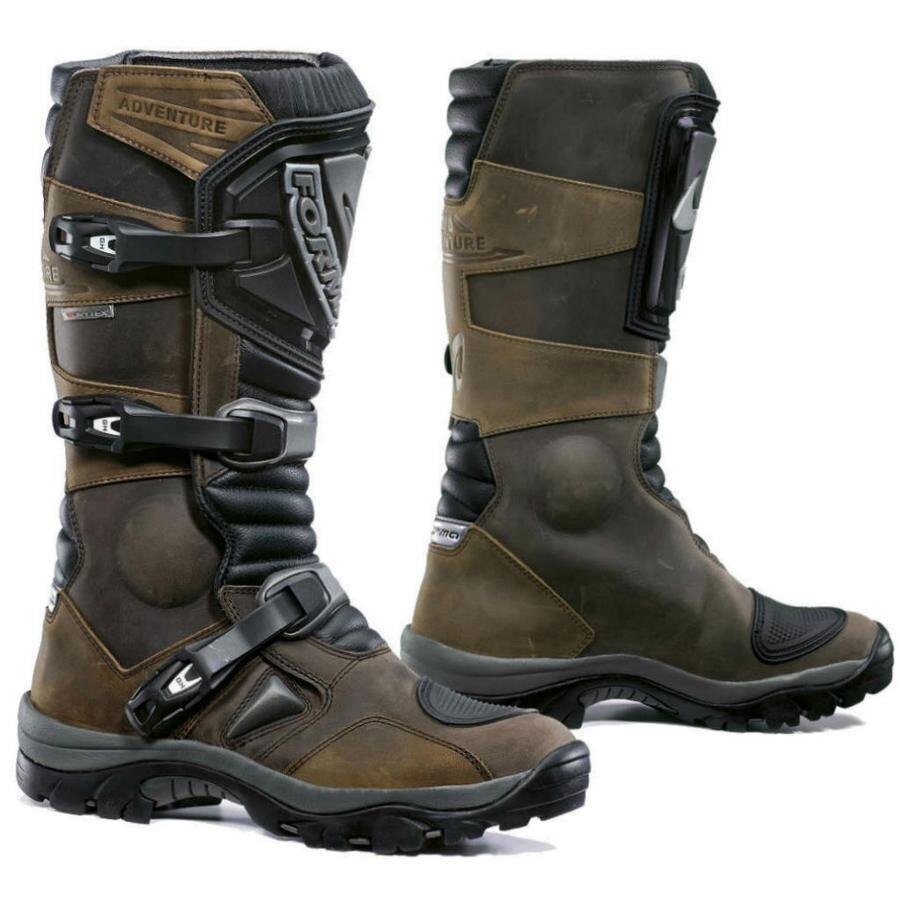
Ok, riding boots, we're almost done. Your typical riding boots are commonly hiking boots, which work as long as they cover the ankles (another contact point) for casual riding. A true riding boot provides much more protection and a stiffer sole (easier for shifting). The type of boot you decide to go with, again, depends on what type of riding you'll be doing. For the casual adventure rider who want's something more than a hiking boot, I'd look at something that goes just above the ankle, and comfortable to wear off the bike too. The long distance touring riders might like something with a little more protection, so a bit higher, with maybe some waterproofing. For those who like to venture down the gravel more, a high motocross style boot, but a bit softer for when you get off the bike, which is your adventure boot. Now for the off-road types, you all know how easy it is to tangle a foot in places it shouldn't be, so I'd say go full enduro dirt bike boot, hard and stiff.... with lots of protection...ok, maybe not the best way to communicate that, but you get it. Whatever you choose, just don't be the sneakers guy.
Pants:
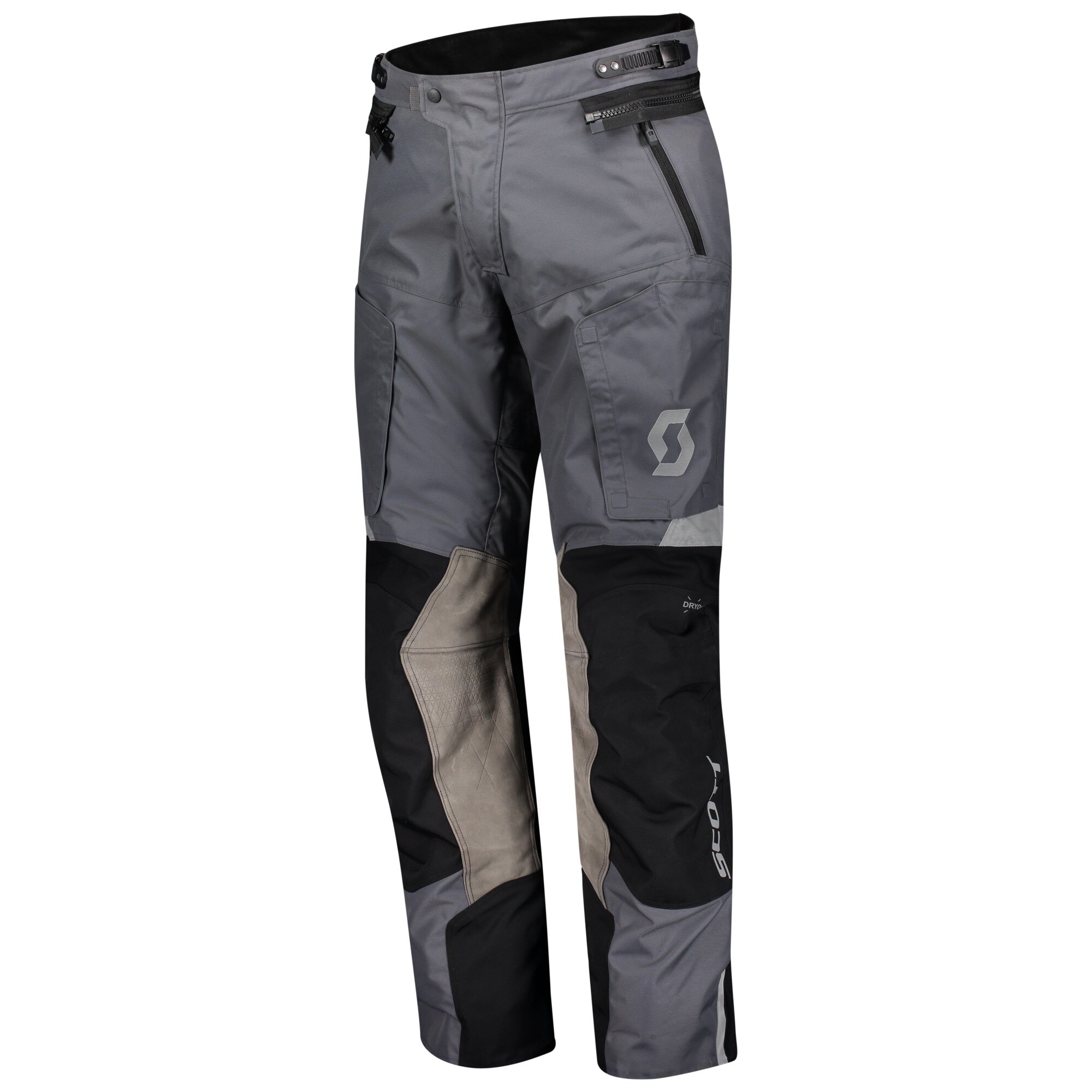
Riding pants aren't something everyone wears all the time, but most have some for certain rides. Riding pants are a good thing to have around for several reasons. First and most important is protection, a good textile riding pant will be much more abrasion resistant than regular jeans and they'll have armor insets in the knees and hips (both main contact points) to help absorb any impact that may occur. Second, a good motorcycle riding pant will be somewhat water resistant, if not waterproof, so riding in the rain or splashing through puddles isn't such a big deal. Third would be comfort, most motorcycle riding pants have vents on them to let the air flow through at speed, keeping you cooler. This allows you to wear shorts on hot days, covered by a riding pant, and when you stop, you just take the pants off, now you're in shorts! Alternatively, on cold days, they'll break the wind better than jeans and be warmer, also allowing you to layer up.
As you can see, riding pants are a great idea to have for days like these, hot or cold.
Another option is riding jeans. True motorcycle riding jeans will be made from thick denim and have Kevlar covering the rear, sides, and knees under the denim, some will offer removable armor pads for the knees and hips. Riding jeans typically don't have vents, and aren't waterproof.
Armor:
For you off-road Adventure bike riders, armor is a thing to look at. Most of the armor will be motocross or enduro bike gear to protect you in case of a fall on uneven surfaces like sticks, rocks, logs, etc.
There are crazy a amount of choices when it comes to armor! I will go over the most common, but the best thing to do is come into the dealer and take a look for yourself.
So for the guy going right out off-road with these bikes, I'd recommend looking to gear up like a dirt biker. Chest and roost protectors are great on the track, but for the trees I will recommend something a bit more robust.
Upper body armor.
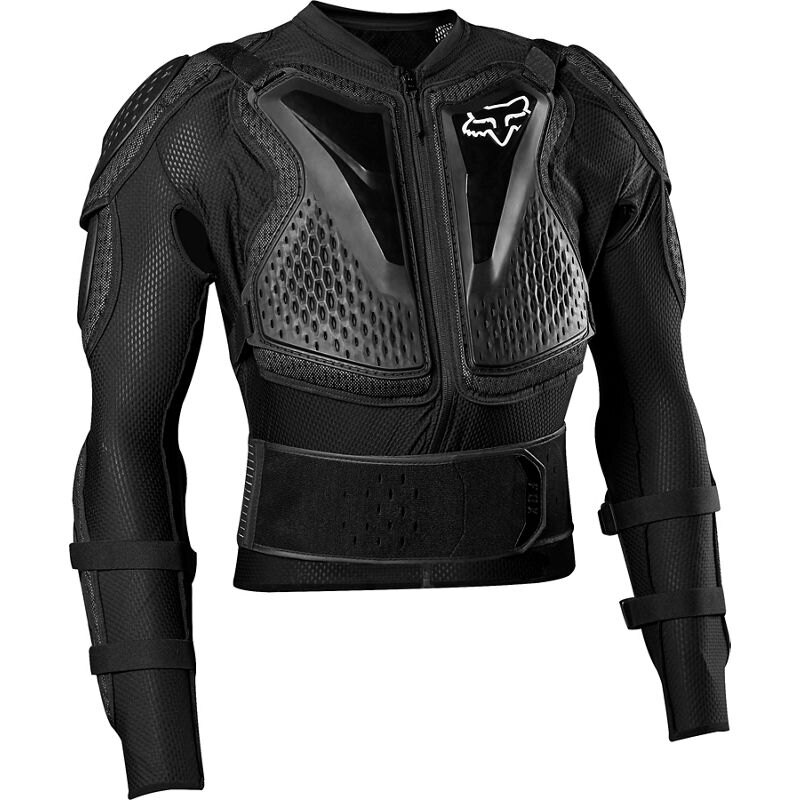
Many different brands make pressures suits, compression suits, armored shirts, all the same thing. This is a waist to wrist “shirt” that has all the upper armor built in, all goes on at once with one zip. This helps the armor stay in place unlike individual pieces. The suit typically includes elbow, shoulder, and chest plates (sometimes hard plastic, or high tech soft armor, I'll touch on that at the end.) Also, they may have a spine board (a large piece of flexible armor that goes from your tailbone up to the back or your head) and a makeshift kidney belt. So, all in one piece you've covered your upper body from a lot of different angles. If you're like me and don't bounce like you used to, these are the answer. These will vary in coverage (sometimes just the shoulders and chest) with bigger or smaller pads and vary on cost from $180 CDN up to $300+ CDN. To go with this armor means you won't need an armored jacket, so just a external shell(off-road jacket) for highway or colder days and a jersey will work for over top on the hot days in the trails.
Knee guards.
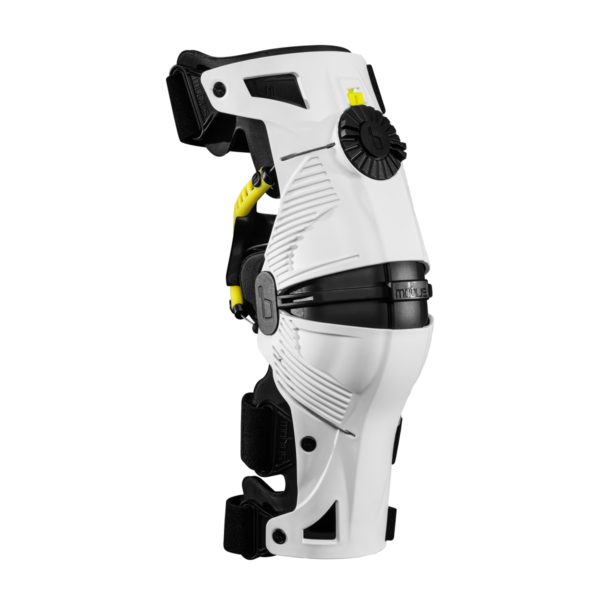
If you're wearing proper motocross boots then knee guards go hand in hand. Knee guards will help in case of a tumble, and help deflect any stick thrown up by the front wheel (yes that does happen) A good hard knee guard that has a couple pivot points will comfortable to wear all day long, and there are some that make the soft armor for something lighter too.
Neck braces.
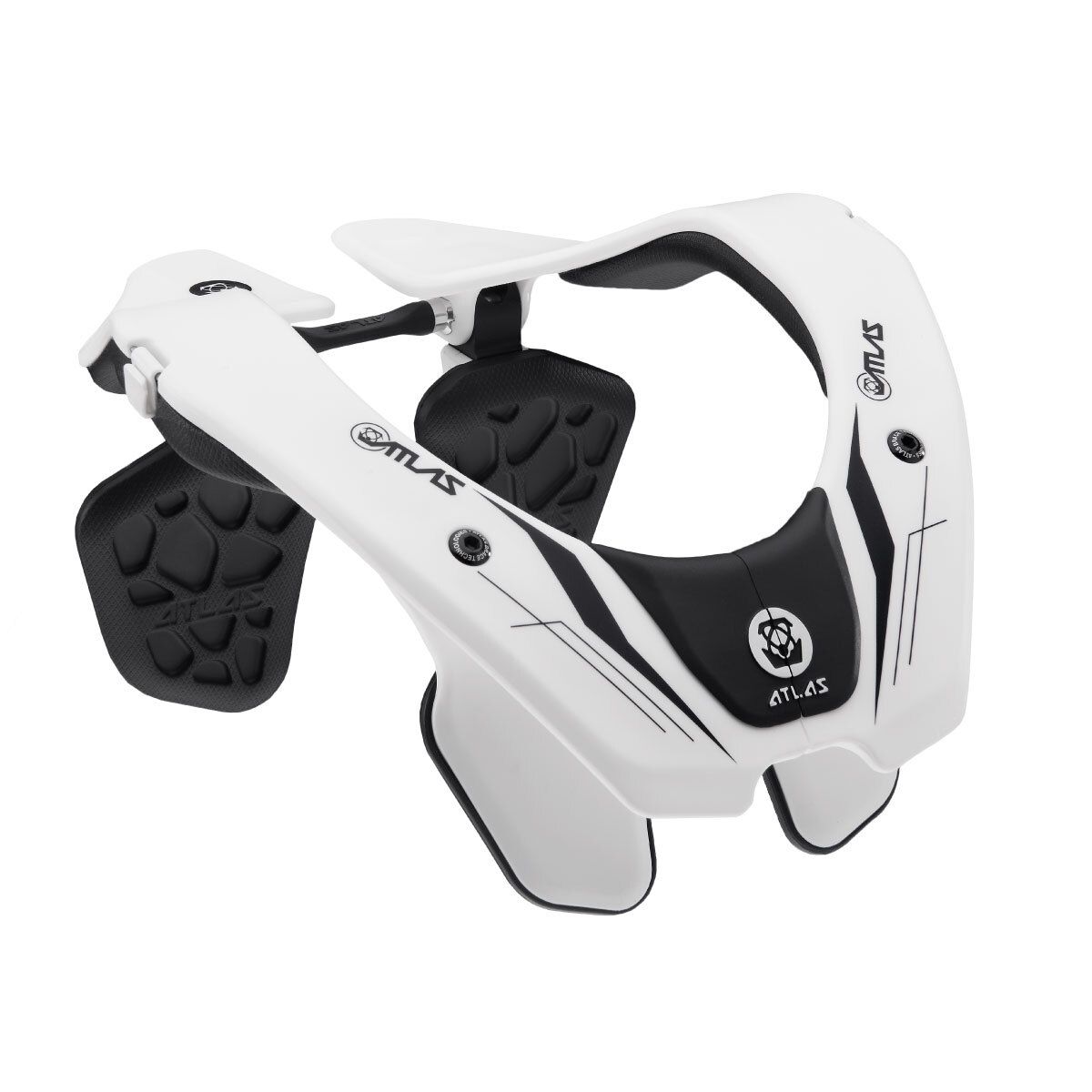
Neck braces are becoming more and more common with the off-road dirt bike riders these days, and for good reason. A good neck brace will help prevent over extension of your neck if you crash at speed, for obvious reasons this is a good thing. When you look at these, make sure you have your armor and helmet figured out as well, to make sure they all work together well.
Kidney belts.
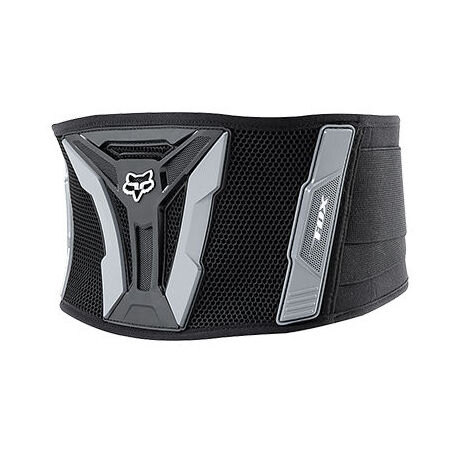
Kidney belts are a good idea for the off-road adventure rider too. These bikes are heavy, and if you go proper off-road, you'll find out how heavy at some point (little know fact: Adventure bikes gain 50lbs for each time you drop it in a day) and the kidney belt will help keep everything in place when you're lifting. They're pretty cheap and easy to pack ($35 CDN is the starting point).
So about the soft armor, I'll be quick here because this can be a whole other article and this one has gone on a little longer than expected. Your typical armor will be a hard plastic backed with soft foam for comfort. This new soft armor is a high tech foam that is soft an pliable when you're wearing it but hardens instantly when it is impacted, spreading the impact over a larger surface, then goes back to soft right away. Soft armor is foam, so it bends and flexes pretty easy unlike hard plastic, so this will make it conform to your body better for better comfort. It feels like you're wearing a lot less armor than you actually are.
Other Gear to consider:
There's lots of other gear you can bring with you, and most of that will, again, depend on what you want to do. Some suggestions would be a good hydration backpack (something that isn't too big, that keeps tight to your back), First aid kit, Polarized sunglasses (great for toning down the glare), SPOT or InReach GPS locators (for off-road mishaps, or peace of mind for your family you gracefully left at home), Turple Bros. Ltd. stickers (because they make things look better and go faster), flashlight, spare cash (for gas in case your card doesn't work) and the list goes on and on and on.
So there you have it! A rather thorough run down on adventure motorcycle riding and what's involved. There's so much more to talk about if you're willing to listen, and there will be more in the future so stay tuned!
P.S. Thanks for reading to the bitter end.










